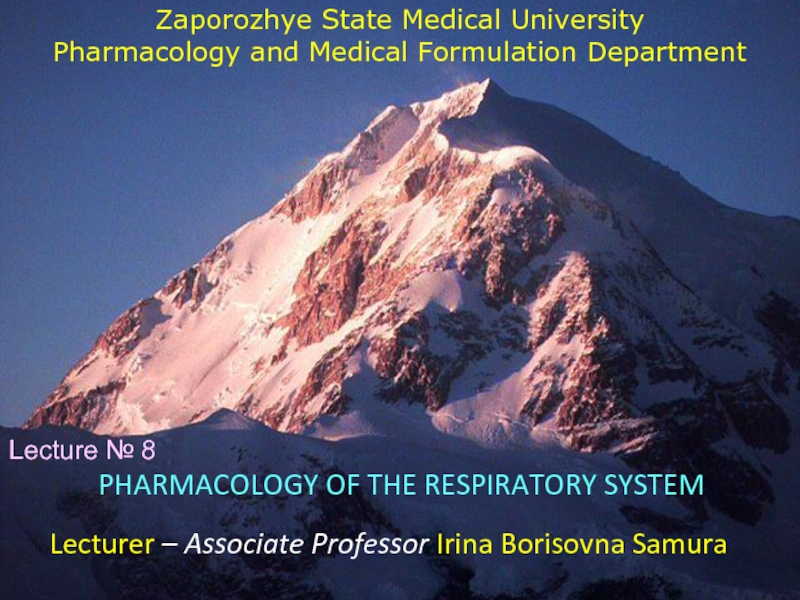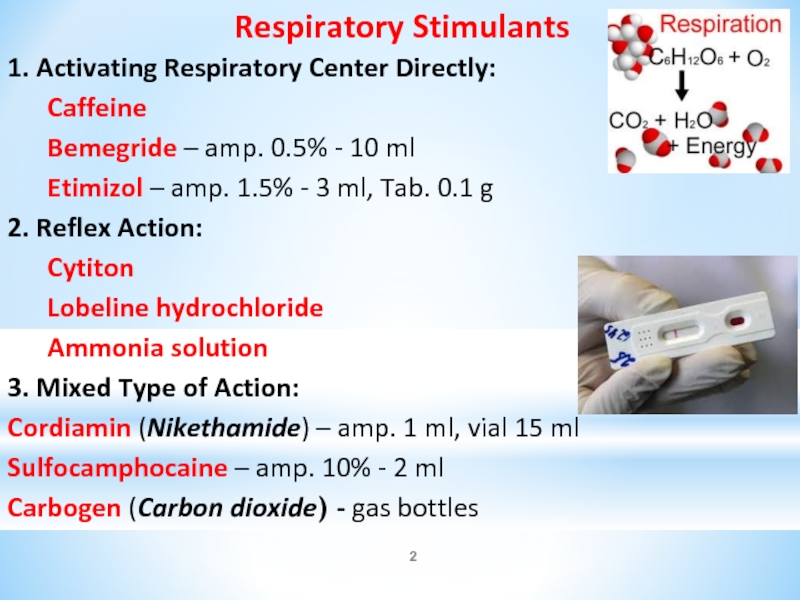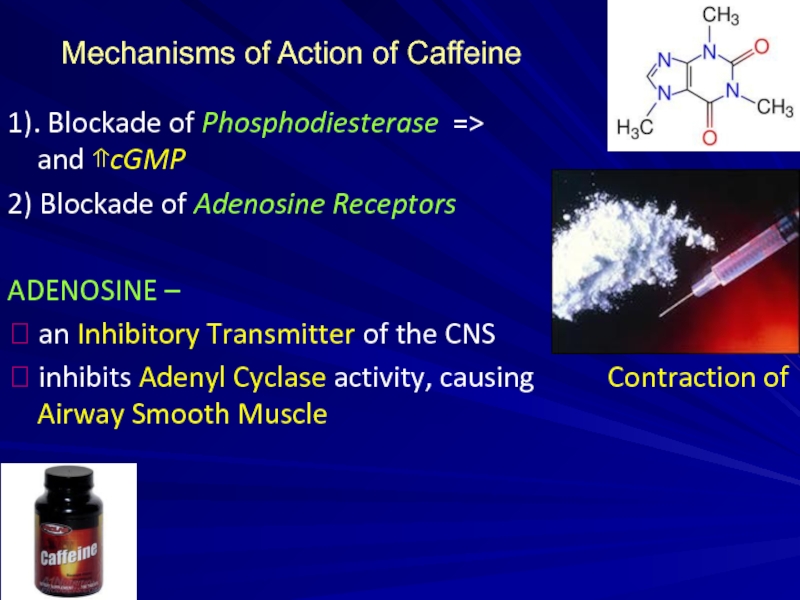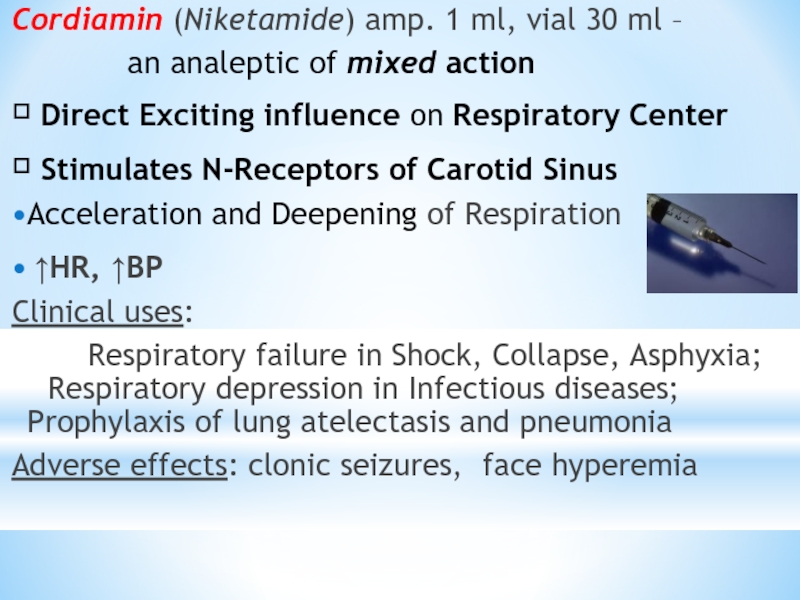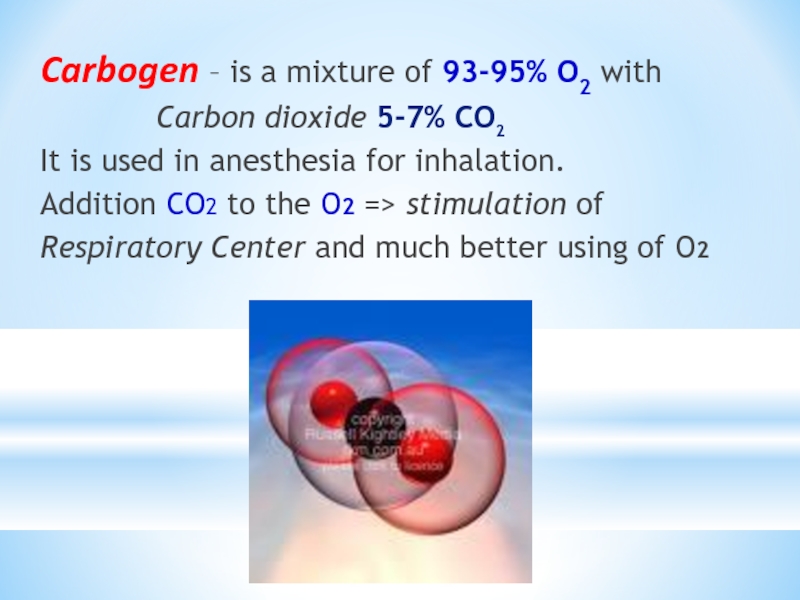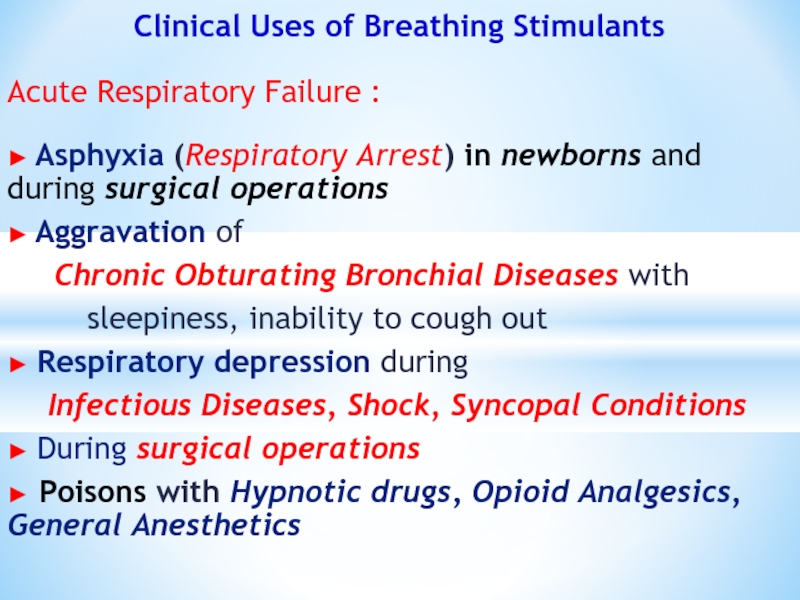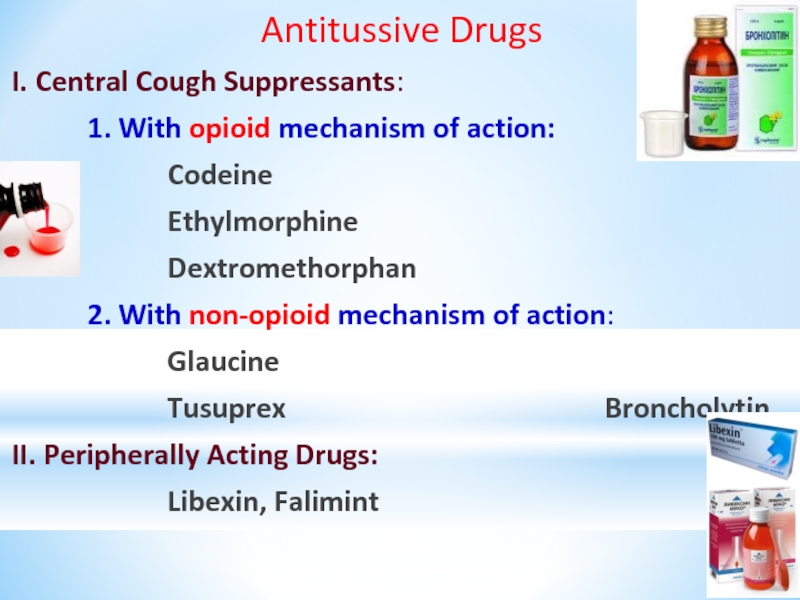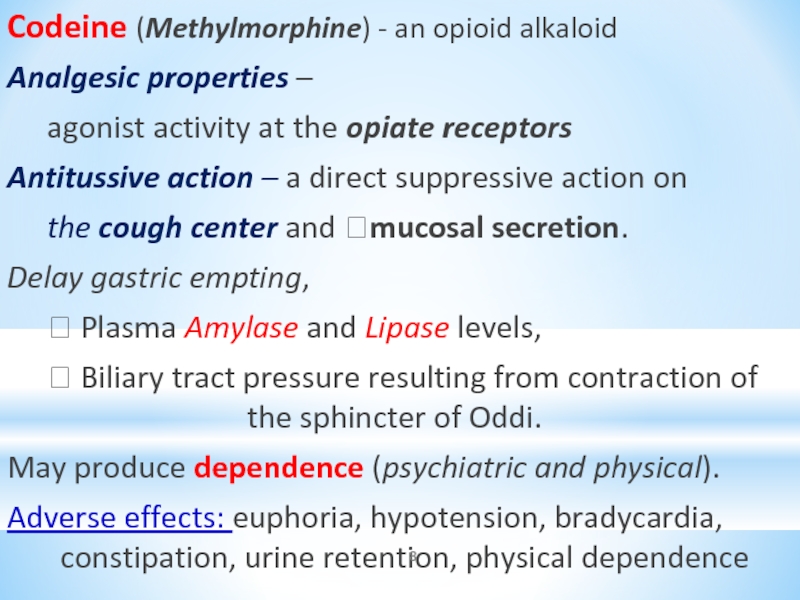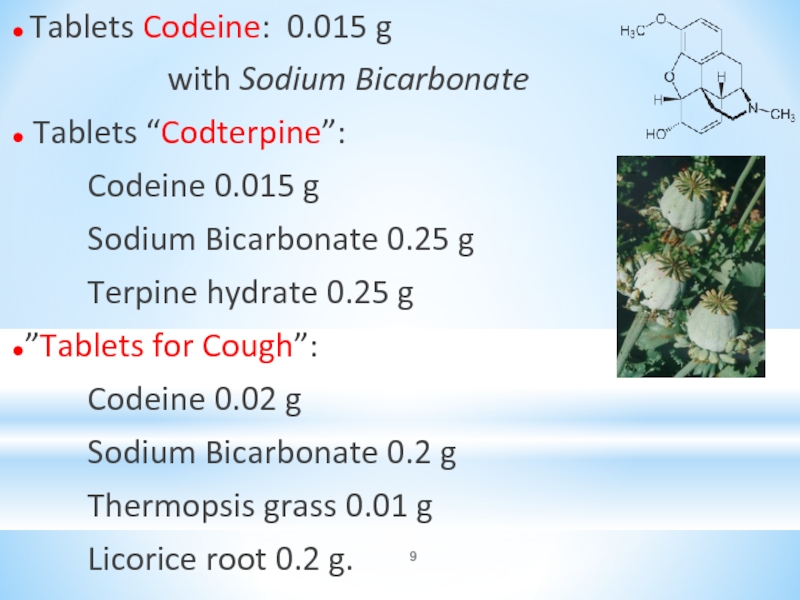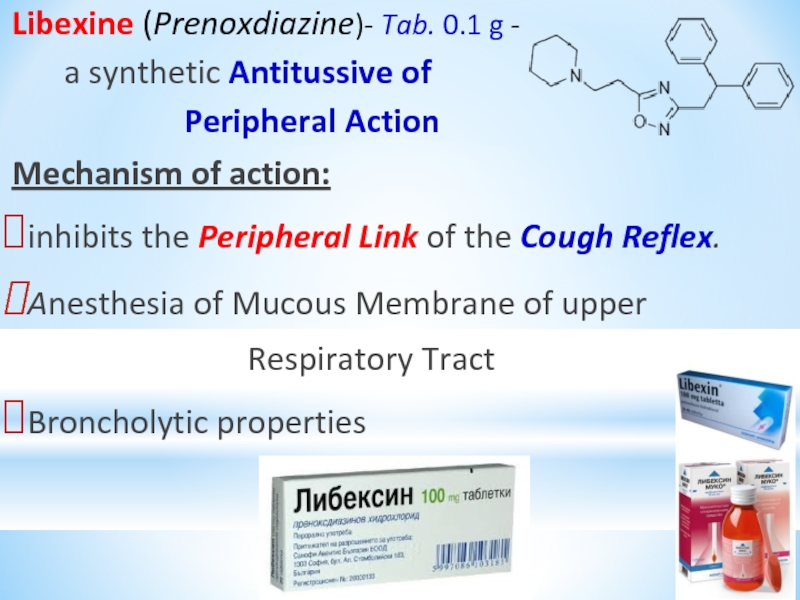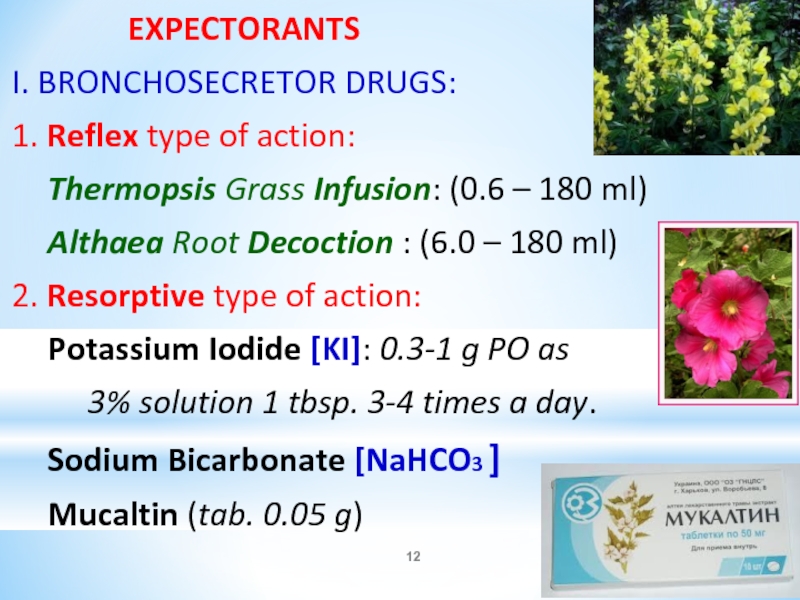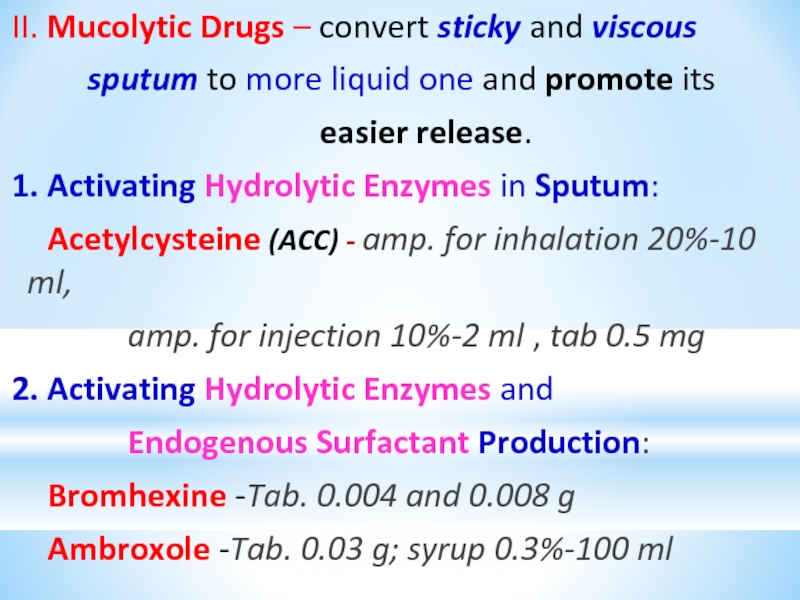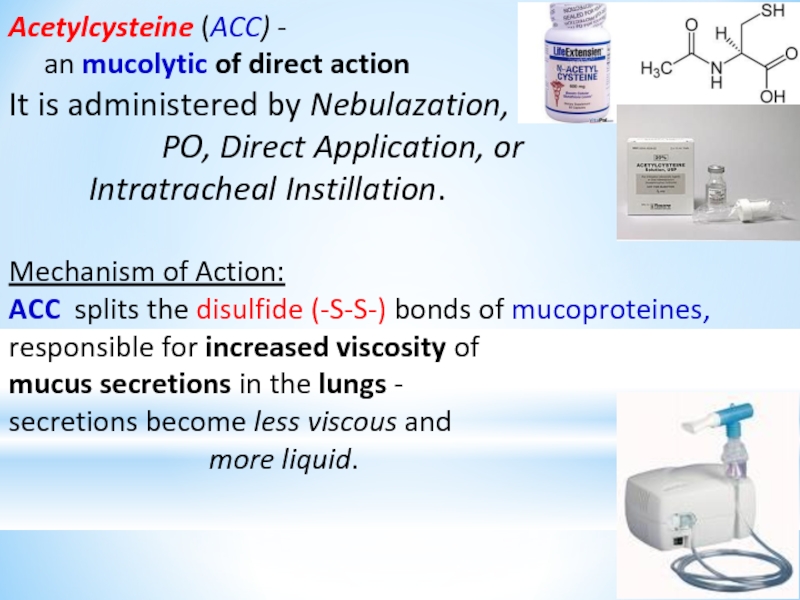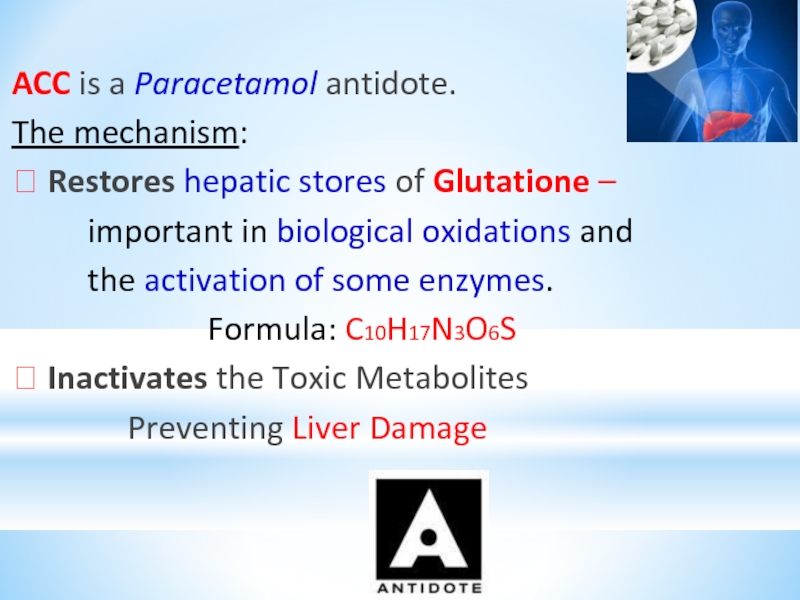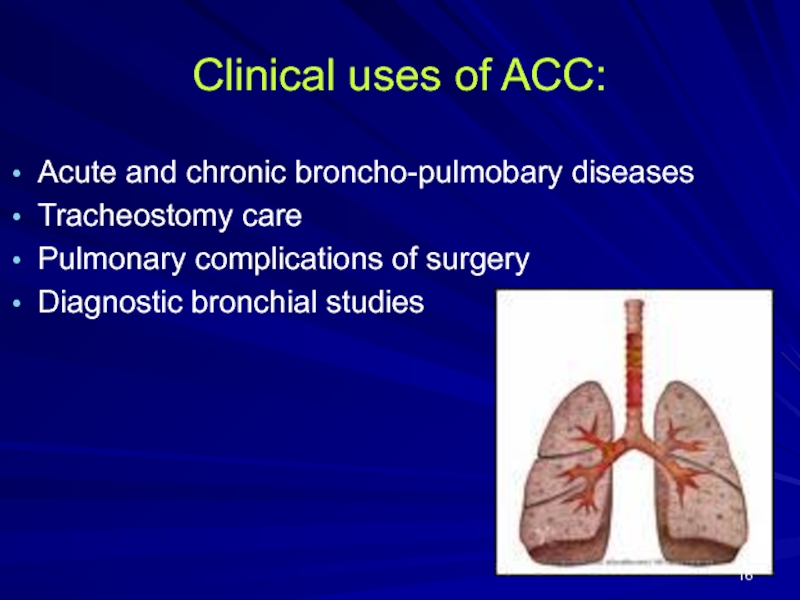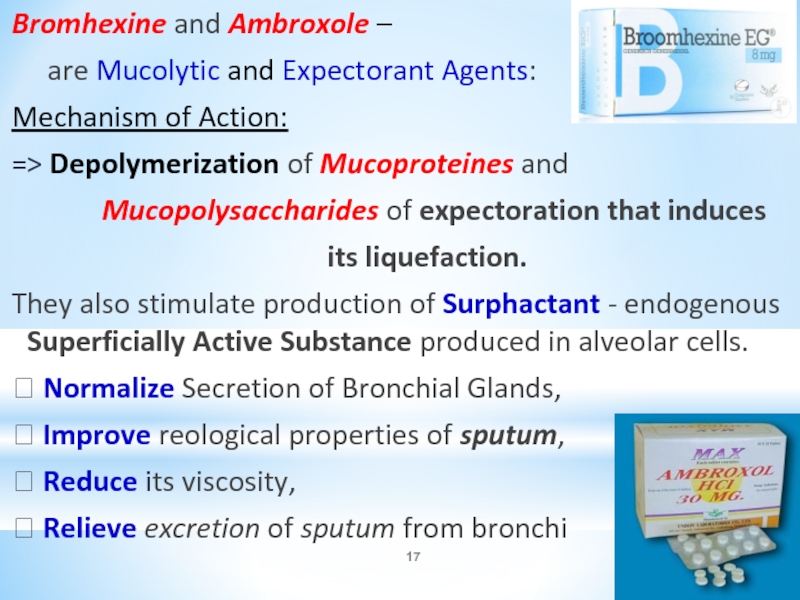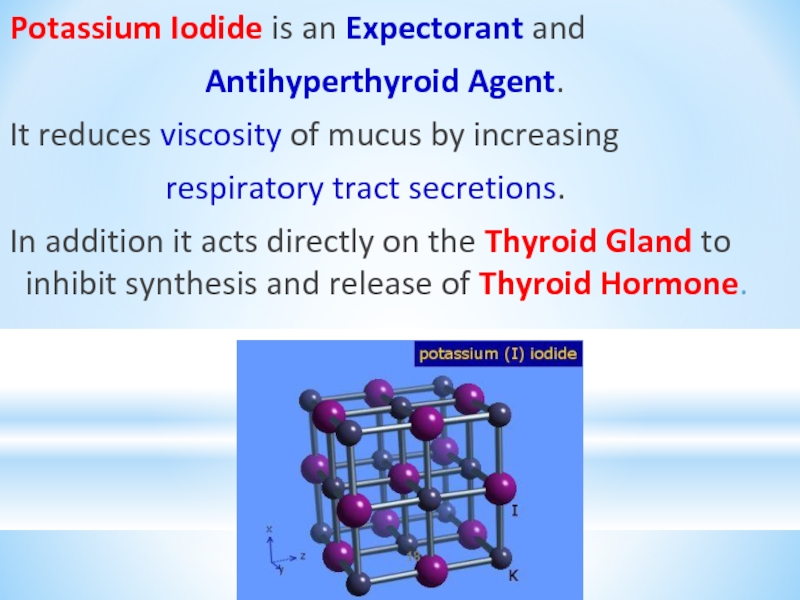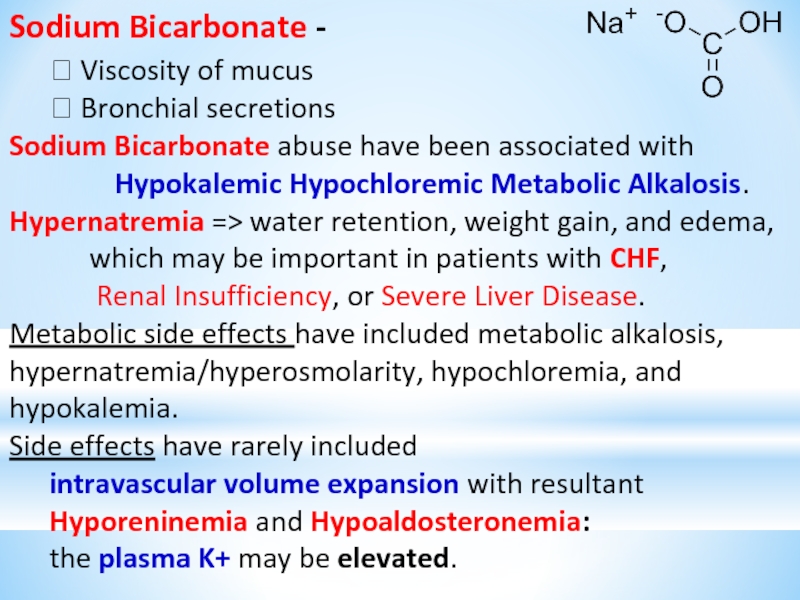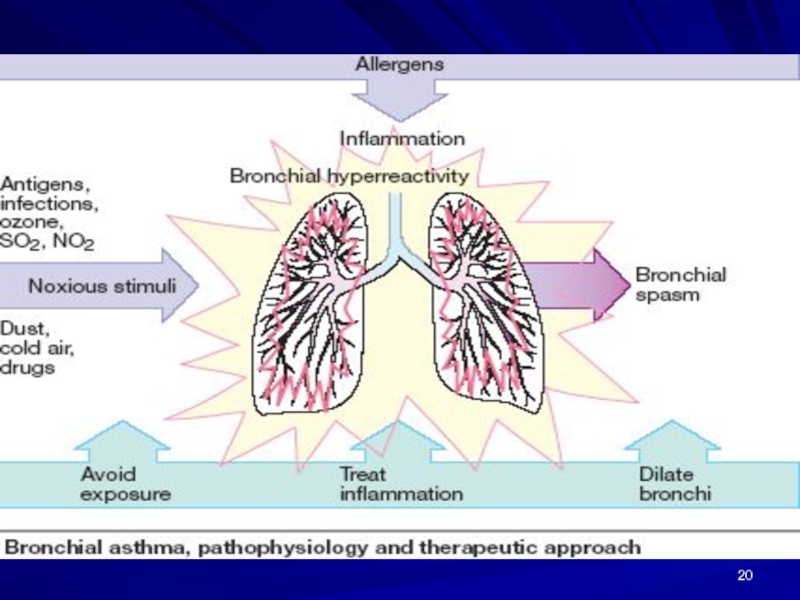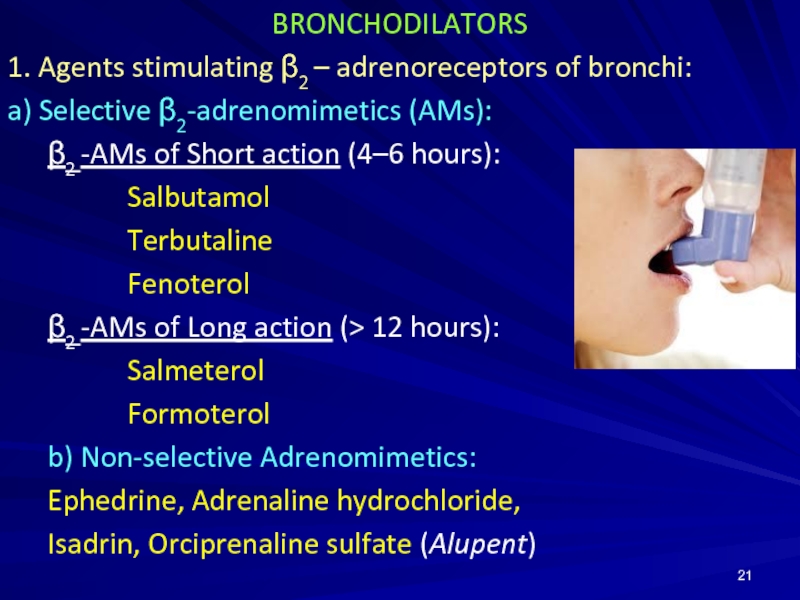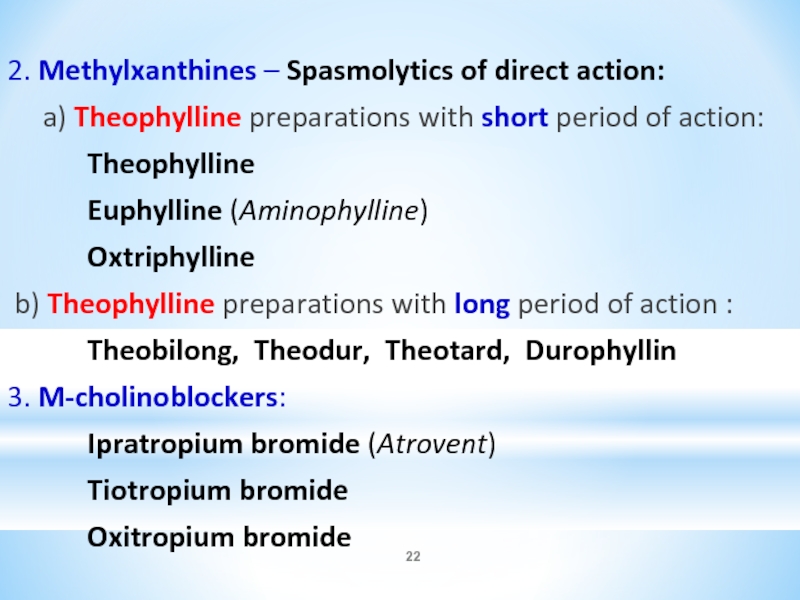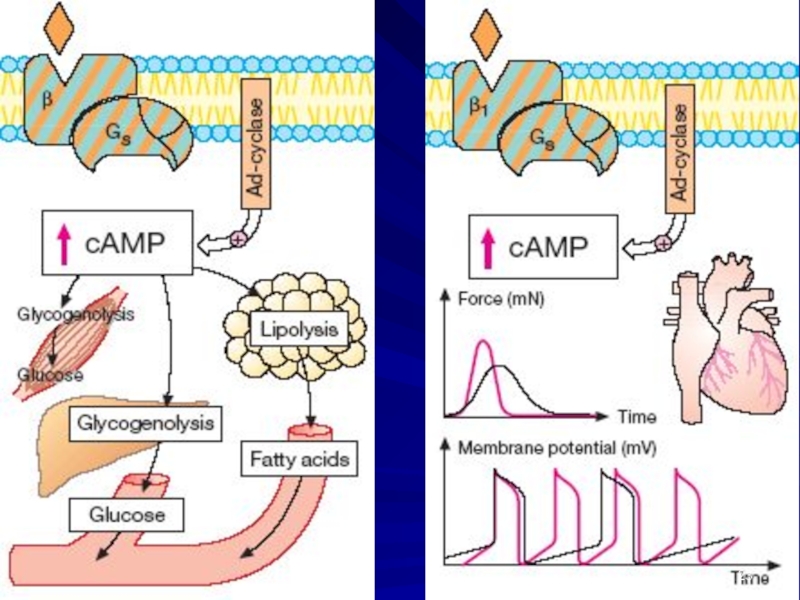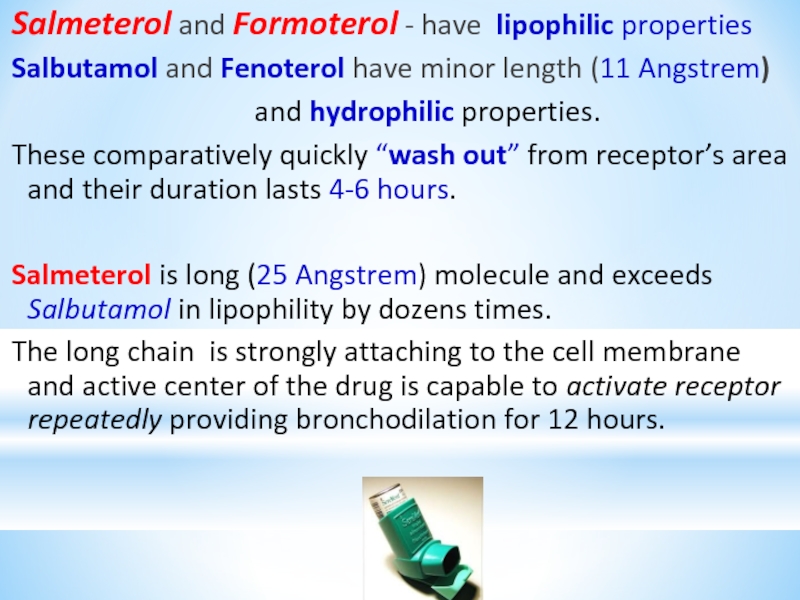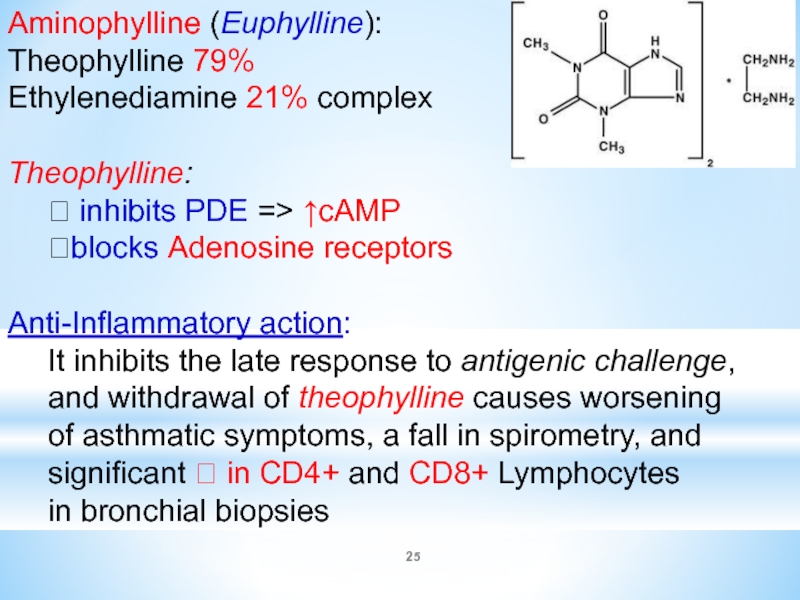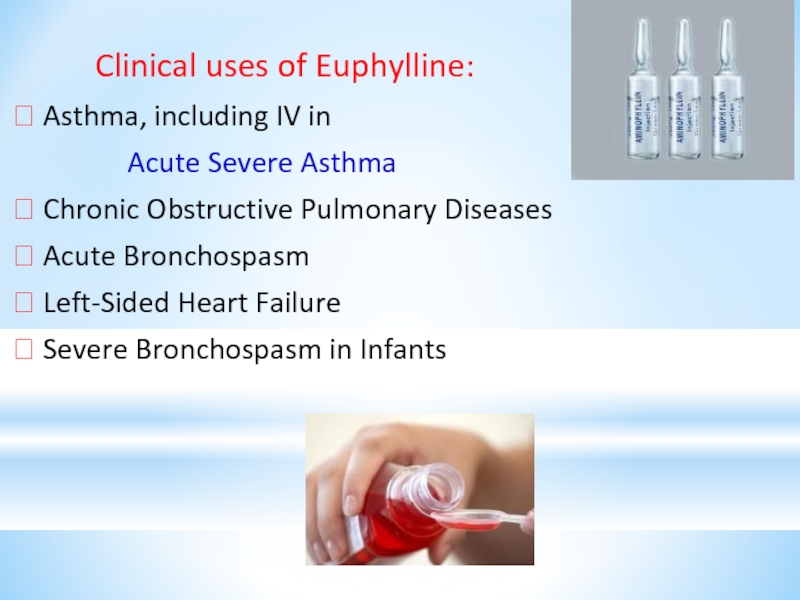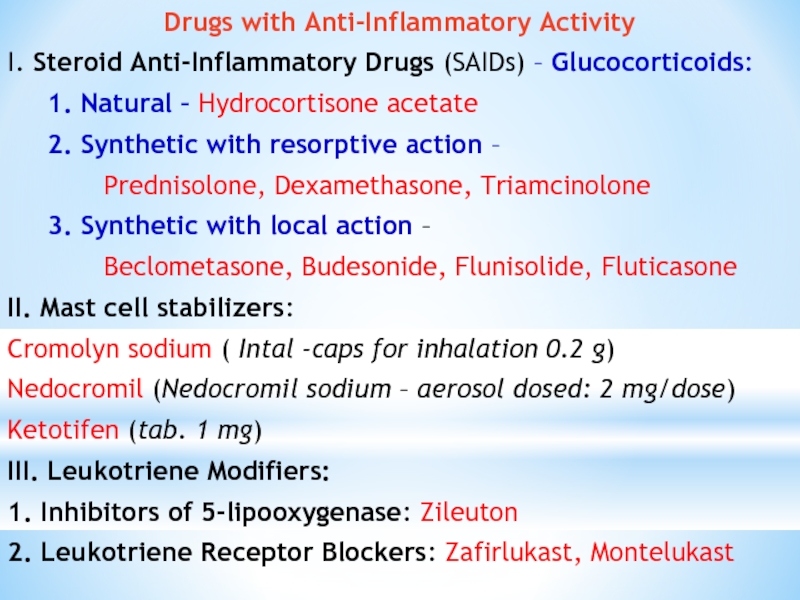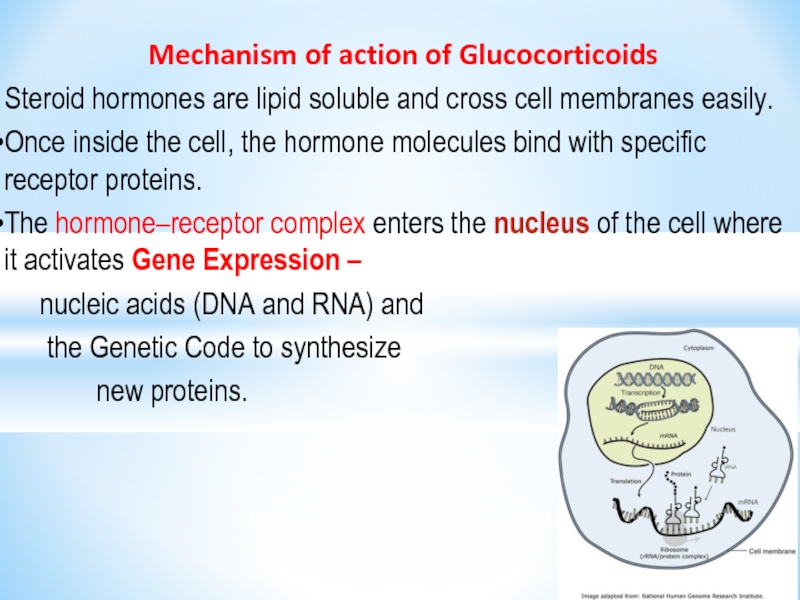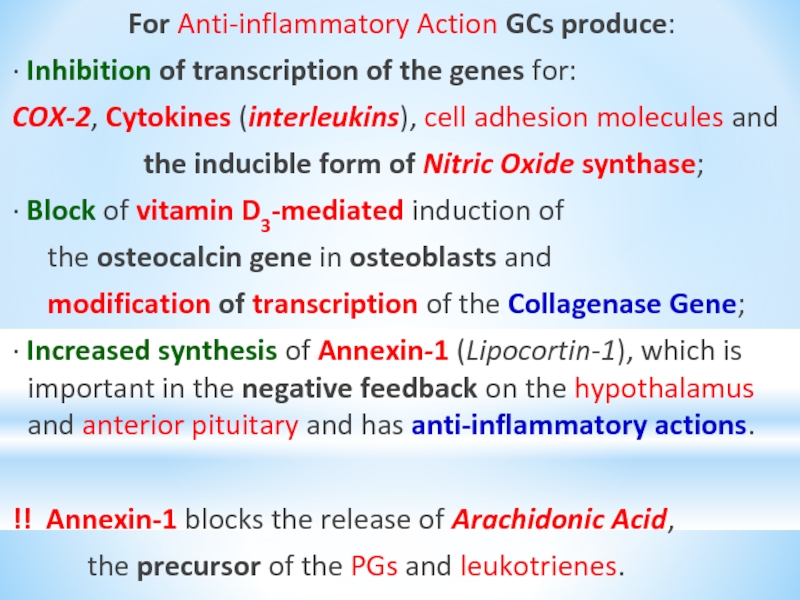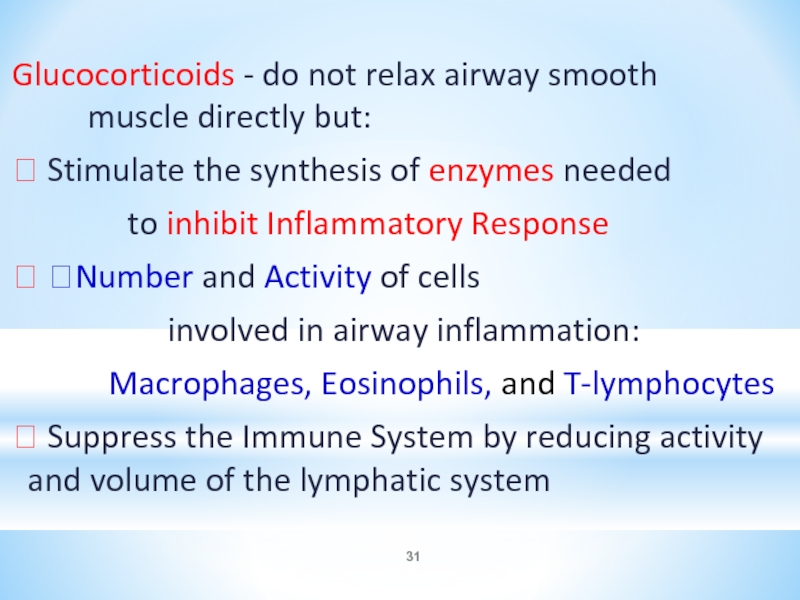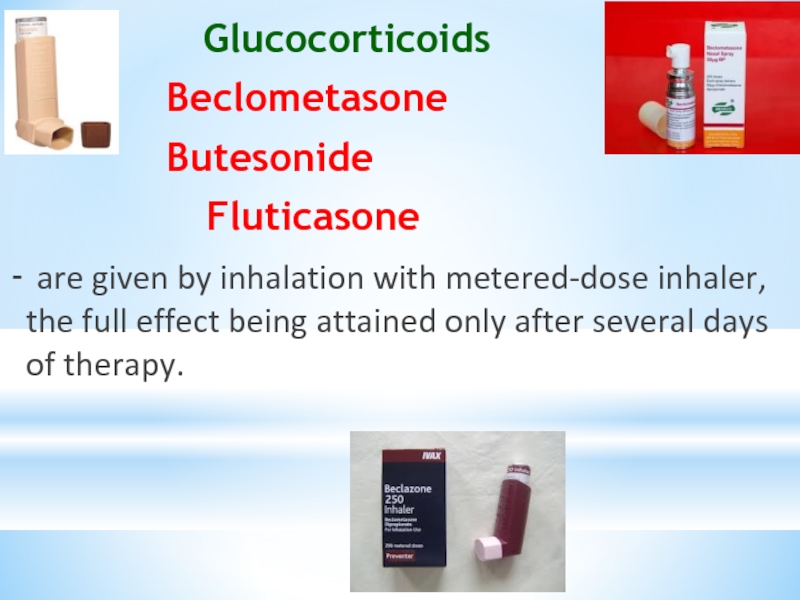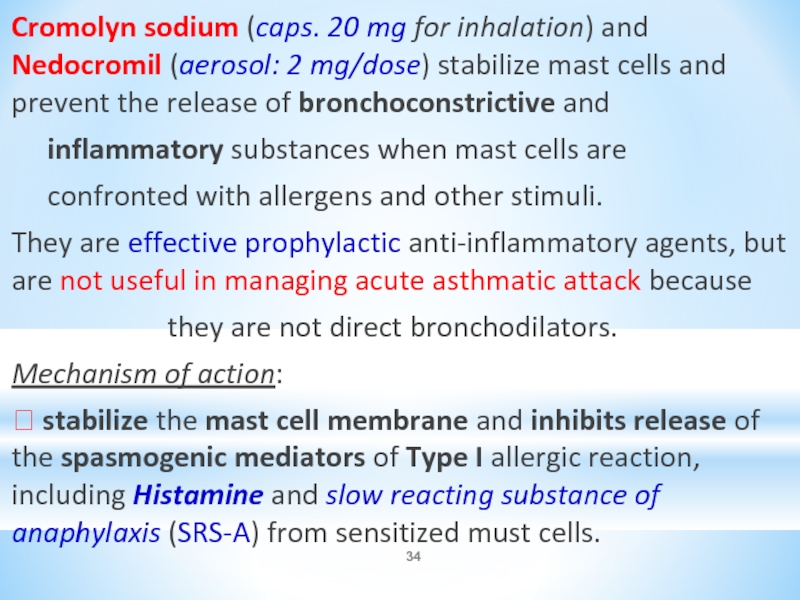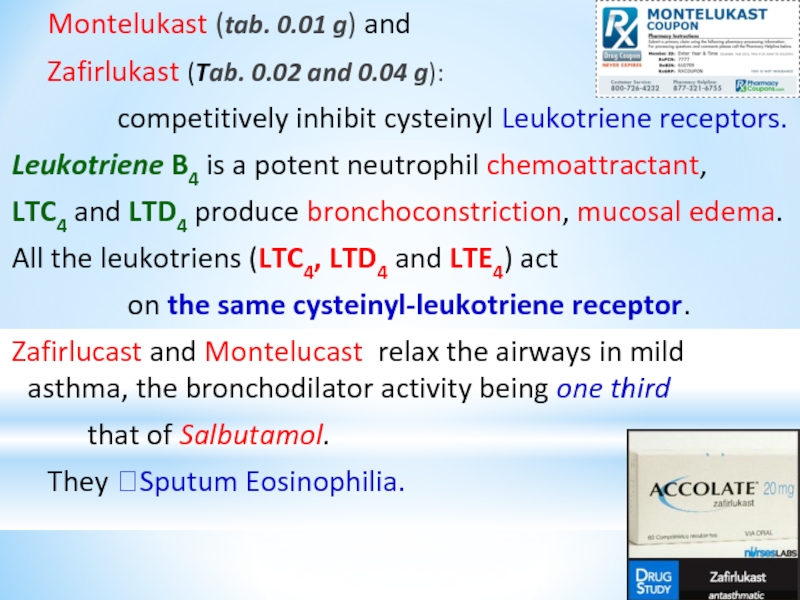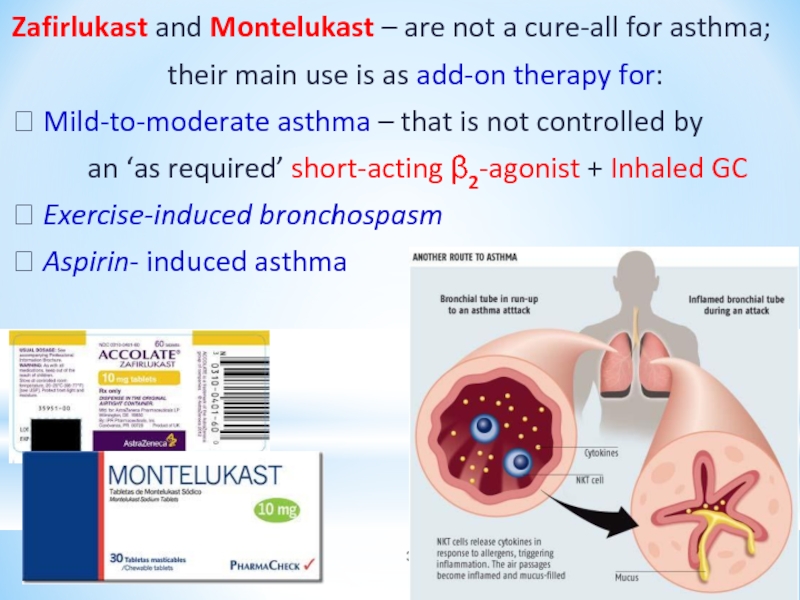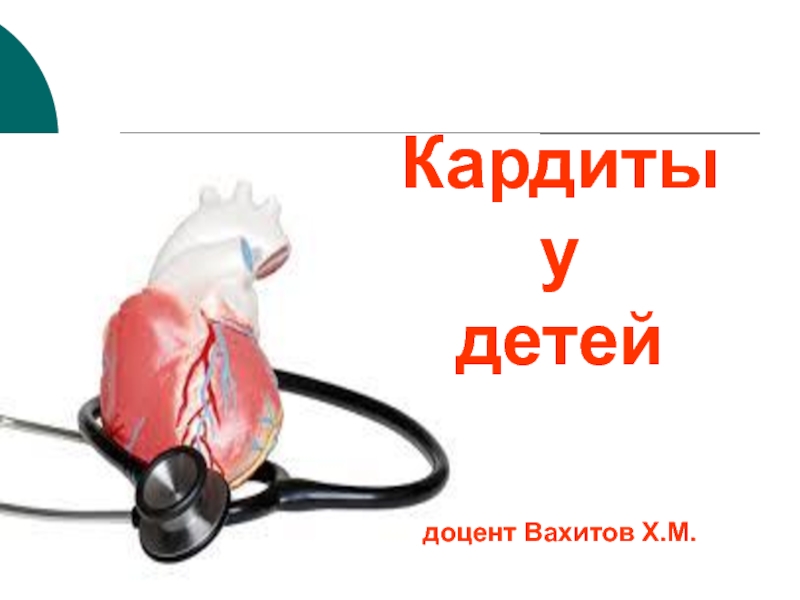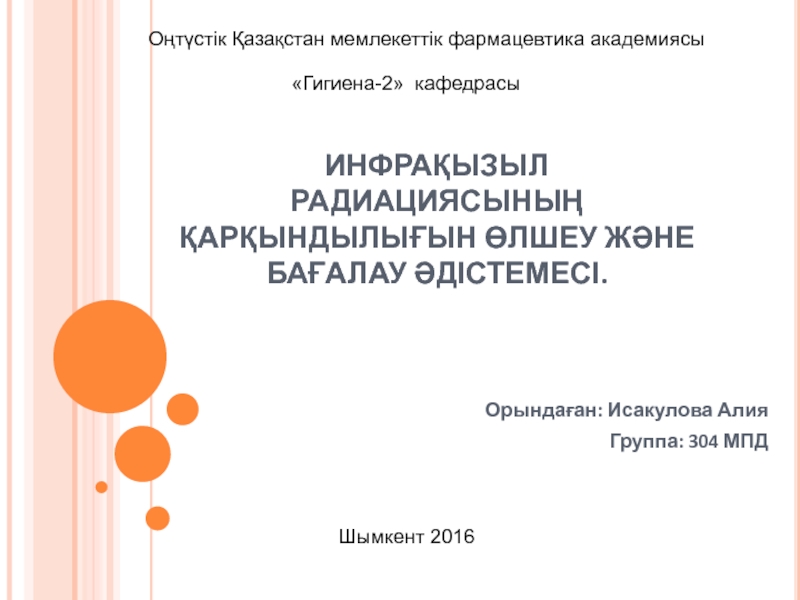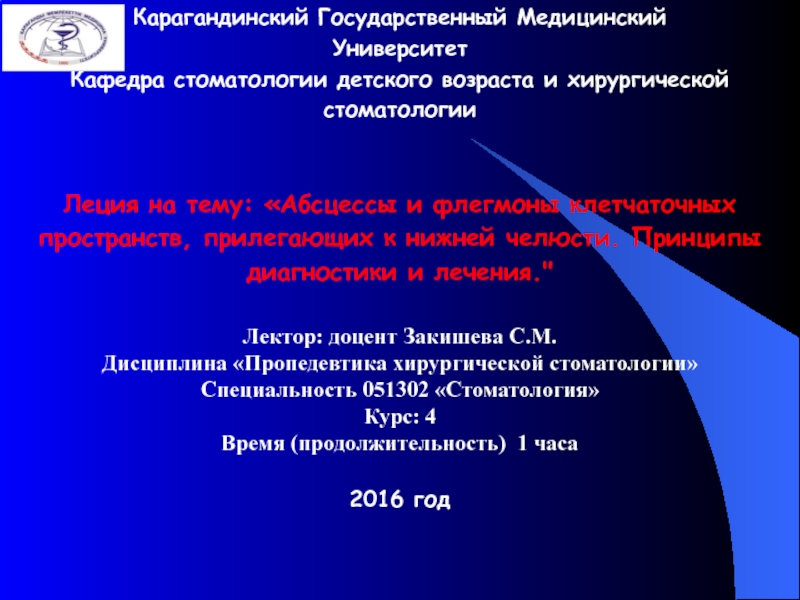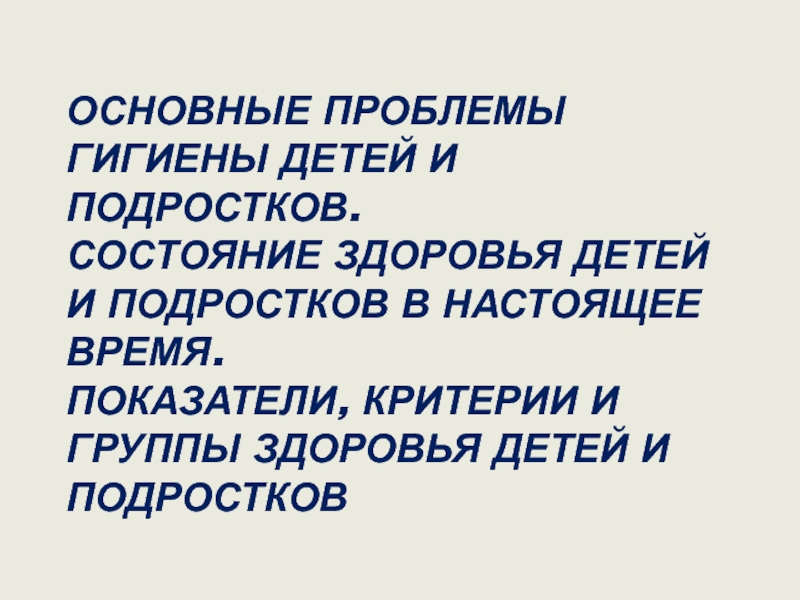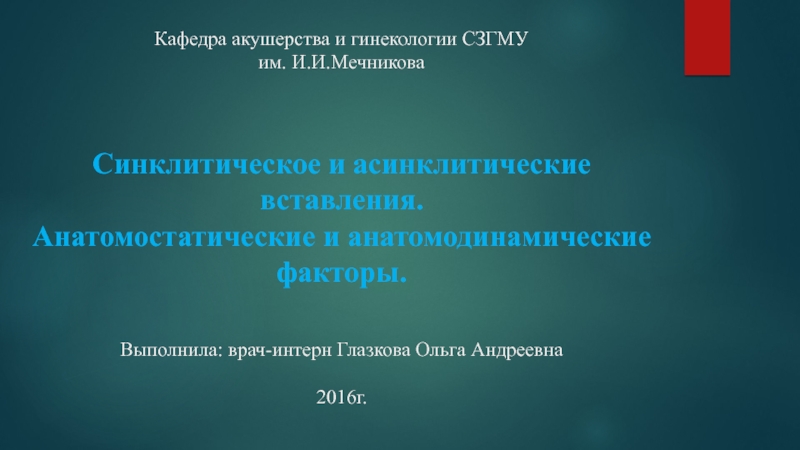Lecturer – Associate Professor Irina Borisovna Samura
- Главная
- Разное
- Дизайн
- Бизнес и предпринимательство
- Аналитика
- Образование
- Развлечения
- Красота и здоровье
- Финансы
- Государство
- Путешествия
- Спорт
- Недвижимость
- Армия
- Графика
- Культурология
- Еда и кулинария
- Лингвистика
- Английский язык
- Астрономия
- Алгебра
- Биология
- География
- Детские презентации
- Информатика
- История
- Литература
- Маркетинг
- Математика
- Медицина
- Менеджмент
- Музыка
- МХК
- Немецкий язык
- ОБЖ
- Обществознание
- Окружающий мир
- Педагогика
- Русский язык
- Технология
- Физика
- Философия
- Химия
- Шаблоны, картинки для презентаций
- Экология
- Экономика
- Юриспруденция
Pharmacology of the respiratory system презентация
Содержание
- 1. Pharmacology of the respiratory system
- 2. Respiratory Stimulants 1. Activating Respiratory Center Directly:
- 3. Mechanisms of Action of Caffeine 1). Blockade
- 4. Cordiamin (Niketamide) amp. 1 ml, vial 30
- 5. Carbogen – is a mixture of
- 6. Clinical Uses of Breathing Stimulants Acute
- 7. Antitussive Drugs I. Central Cough Suppressants:
- 8. Codeine (Methylmorphine) - an opioid alkaloid Analgesic
- 9. ● Tablets Codeine: 0.015 g with
- 10. Glaucine hydrochloride – Tab. 0.05 g –
- 11. Libexine (Prenoxdiazine)- Tab. 0.1 g -
- 12. EXPECTORANTS I. BRONCHOSECRETOR DRUGS: 1. Reflex type
- 13. II. Mucolytic Drugs – convert sticky and
- 14. Acetylcysteine (ACC) -
- 15. ACC is a Paracetamol antidote. The
- 16. Clinical uses of ACC: Acute and chronic
- 17. Bromhexine and Ambroxole – are Mucolytic and
- 18. Potassium Iodide is an Expectorant and
- 19. Sodium Bicarbonate - ? Viscosity of
- 21. BRONCHODILATORS 1. Agents stimulating β2 – adrenoreceptors
- 22. 2. Methylxanthines – Spasmolytics of direct
- 24. Salmeterol and Formoterol - have lipophilic properties
- 25. Aminophylline (Euphylline): Theophylline 79% Ethylenediamine
- 26. Clinical
- 27. Drugs with Anti-Inflammatory Activity I. Steroid Anti-Inflammatory
- 28. Mechanism of action of Glucocorticoids
- 29. For Anti-inflammatory Action GCs produce: ∙ Inhibition
- 30. Pharmacological Effects of Glucocorticoids: ??Prostaglandin production due
- 31. Glucocorticoids - do not relax airway
- 32. Glucocorticoids Beclometasone Butesonide Fluticasone
- 33. ADVERSE EFFECT OF GCs: Local Effects: Oropharyngeal
- 34. Cromolyn sodium (caps. 20 mg for inhalation)
- 35. Ketotifen (tab. 1 mg), a cromolyn analog,
- 36. Montelukast (tab. 0.01 g) and Zafirlukast
- 37. Zafirlukast and Montelukast – are not a
- 38. Thank You for Attention !
Слайд 1Zaporozhye State Medical University
Pharmacology and Medical Formulation Department
Lecture № 8
PHARMACOLOGY OF
THE RESPIRATORY SYSTEM
Слайд 2Respiratory Stimulants
1. Activating Respiratory Center Directly:
Caffeine
Bemegride – amp. 0.5%
- 10 ml
Etimizol – amp. 1.5% - 3 ml, Tab. 0.1 g
2. Reflex Action:
Cytiton
Lobeline hydrochloride
Ammonia solution
3. Mixed Type of Action:
Cordiamin (Nikethamide) – amp. 1 ml, vial 15 ml
Sulfocamphocaine – amp. 10% - 2 ml
Carbogen (Carbon dioxide) - gas bottles
Etimizol – amp. 1.5% - 3 ml, Tab. 0.1 g
2. Reflex Action:
Cytiton
Lobeline hydrochloride
Ammonia solution
3. Mixed Type of Action:
Cordiamin (Nikethamide) – amp. 1 ml, vial 15 ml
Sulfocamphocaine – amp. 10% - 2 ml
Carbogen (Carbon dioxide) - gas bottles
Слайд 3Mechanisms of Action of Caffeine
1). Blockade of Phosphodiesterase => ⇑ cAMP
and ⇑cGMP
2) Blockade of Adenosine Receptors
ADENOSINE –
⮚ an Inhibitory Transmitter of the CNS
⮚ inhibits Adenyl Cyclase activity, causing Contraction of Airway Smooth Muscle
2) Blockade of Adenosine Receptors
ADENOSINE –
⮚ an Inhibitory Transmitter of the CNS
⮚ inhibits Adenyl Cyclase activity, causing Contraction of Airway Smooth Muscle
Слайд 4Cordiamin (Niketamide) amp. 1 ml, vial 30 ml –
an analeptic
of mixed action
? Direct Exciting influence on Respiratory Center
? Stimulates N-Receptors of Carotid Sinus
•Acceleration and Deepening of Respiration
• ↑HR, ↑BP
Clinical uses:
Respiratory failure in Shock, Collapse, Asphyxia; Respiratory depression in Infectious diseases; Prophylaxis of lung atelectasis and pneumonia
Adverse effects: clonic seizures, face hyperemia
? Direct Exciting influence on Respiratory Center
? Stimulates N-Receptors of Carotid Sinus
•Acceleration and Deepening of Respiration
• ↑HR, ↑BP
Clinical uses:
Respiratory failure in Shock, Collapse, Asphyxia; Respiratory depression in Infectious diseases; Prophylaxis of lung atelectasis and pneumonia
Adverse effects: clonic seizures, face hyperemia
Слайд 5
Carbogen – is a mixture of 93-95% O2 with
Carbon dioxide
5-7% CO2
It is used in anesthesia for inhalation.
Addition CO2 to the O2 => stimulation of
Respiratory Center and much better using of O2
It is used in anesthesia for inhalation.
Addition CO2 to the O2 => stimulation of
Respiratory Center and much better using of O2
Слайд 6Clinical Uses of Breathing Stimulants
Acute Respiratory Failure :
► Asphyxia (Respiratory
Arrest) in newborns and during surgical operations
► Aggravation of
Chronic Obturating Bronchial Diseases with
sleepiness, inability to cough out
► Respiratory depression during
Infectious Diseases, Shock, Syncopal Conditions
► During surgical operations
► Poisons with Hypnotic drugs, Opioid Analgesics, General Anesthetics
► Aggravation of
Chronic Obturating Bronchial Diseases with
sleepiness, inability to cough out
► Respiratory depression during
Infectious Diseases, Shock, Syncopal Conditions
► During surgical operations
► Poisons with Hypnotic drugs, Opioid Analgesics, General Anesthetics
Слайд 7Antitussive Drugs
I. Central Cough Suppressants:
1. With opioid mechanism of action:
Codeine
Ethylmorphine
Dextromethorphan
2. With non-opioid mechanism of action:
Glaucine
Tusuprex Broncholytin
II. Peripherally Acting Drugs:
Libexin, Falimint
Слайд 8Codeine (Methylmorphine) - an opioid alkaloid
Analgesic properties –
agonist activity at
the opiate receptors
Antitussive action – a direct suppressive action on
the cough center and ?mucosal secretion.
Delay gastric empting,
? Plasma Amylase and Lipase levels,
? Biliary tract pressure resulting from contraction of the sphincter of Oddi.
May produce dependence (psychiatric and physical).
Adverse effects: euphoria, hypotension, bradycardia, constipation, urine retention, physical dependence
Antitussive action – a direct suppressive action on
the cough center and ?mucosal secretion.
Delay gastric empting,
? Plasma Amylase and Lipase levels,
? Biliary tract pressure resulting from contraction of the sphincter of Oddi.
May produce dependence (psychiatric and physical).
Adverse effects: euphoria, hypotension, bradycardia, constipation, urine retention, physical dependence
Слайд 9● Tablets Codeine: 0.015 g
with Sodium Bicarbonate
● Tablets “Codterpine”:
Codeine
0.015 g
Sodium Bicarbonate 0.25 g
Terpine hydrate 0.25 g
●”Tablets for Cough”:
Codeine 0.02 g
Sodium Bicarbonate 0.2 g
Thermopsis grass 0.01 g
Licorice root 0.2 g.
Sodium Bicarbonate 0.25 g
Terpine hydrate 0.25 g
●”Tablets for Cough”:
Codeine 0.02 g
Sodium Bicarbonate 0.2 g
Thermopsis grass 0.01 g
Licorice root 0.2 g.
Слайд 10Glaucine hydrochloride – Tab. 0.05 g –
It is an alkaloid
from the Yellow Poppy plant
Glaucine (Glaucium Flavum) and may
also be synthetically derived.
It is a powerhouse ingredient in the reduction of cough.
Mechanism of action:
inhibits the Central Link of the Cough Reflex.
Broncholytin - Syrup 125 ml –
a complex antitussive drug.
125 ml of syrup contains:
Glaucine 0.125 g
Ephedrine 0.1 g
Basil Oil 0.125 g
Glaucine (Glaucium Flavum) and may
also be synthetically derived.
It is a powerhouse ingredient in the reduction of cough.
Mechanism of action:
inhibits the Central Link of the Cough Reflex.
Broncholytin - Syrup 125 ml –
a complex antitussive drug.
125 ml of syrup contains:
Glaucine 0.125 g
Ephedrine 0.1 g
Basil Oil 0.125 g
Слайд 11Libexine (Prenoxdiazine)- Tab. 0.1 g -
a synthetic Antitussive of
Peripheral Action
Mechanism of action:
inhibits the Peripheral Link of the Cough Reflex.
Anesthesia of Mucous Membrane of upper
Respiratory Tract
Broncholytic properties
Слайд 12 EXPECTORANTS
I. BRONCHOSECRETOR DRUGS:
1. Reflex type of action:
Thermopsis Grass Infusion: (0.6 –
180 ml)
Althaea Root Decoction : (6.0 – 180 ml)
2. Resorptive type of action:
Potassium Iodide [KI]: 0.3-1 g PO as
3% solution 1 tbsp. 3-4 times a day.
Sodium Bicarbonate [NaHCO3 ]
Mucaltin (tab. 0.05 g)
Althaea Root Decoction : (6.0 – 180 ml)
2. Resorptive type of action:
Potassium Iodide [KI]: 0.3-1 g PO as
3% solution 1 tbsp. 3-4 times a day.
Sodium Bicarbonate [NaHCO3 ]
Mucaltin (tab. 0.05 g)
Слайд 13II. Mucolytic Drugs – convert sticky and viscous
sputum to more
liquid one and promote its
easier release.
1. Activating Hydrolytic Enzymes in Sputum:
Acetylcysteine (ACC) - amp. for inhalation 20%-10 ml,
amp. for injection 10%-2 ml , tab 0.5 mg
2. Activating Hydrolytic Enzymes and
Endogenous Surfactant Production:
Bromhexine -Tab. 0.004 and 0.008 g
Ambroxole -Tab. 0.03 g; syrup 0.3%-100 ml
easier release.
1. Activating Hydrolytic Enzymes in Sputum:
Acetylcysteine (ACC) - amp. for inhalation 20%-10 ml,
amp. for injection 10%-2 ml , tab 0.5 mg
2. Activating Hydrolytic Enzymes and
Endogenous Surfactant Production:
Bromhexine -Tab. 0.004 and 0.008 g
Ambroxole -Tab. 0.03 g; syrup 0.3%-100 ml
Слайд 14
Acetylcysteine (ACC) -
an mucolytic of direct action
It
is administered by Nebulazation,
PO, Direct Application, or
Intratracheal Instillation.
Mechanism of Action:
ACC splits the disulfide (-S-S-) bonds of mucoproteines, responsible for increased viscosity of
mucus secretions in the lungs -
secretions become less viscous and
more liquid.
more liquid.
Слайд 15ACC is a Paracetamol antidote.
The mechanism:
⮚ Restores hepatic stores
of Glutatione –
important in biological oxidations and
the activation of some enzymes.
Formula: C10H17N3O6S
⮚ Inactivates the Toxic Metabolites
Preventing Liver Damage
important in biological oxidations and
the activation of some enzymes.
Formula: C10H17N3O6S
⮚ Inactivates the Toxic Metabolites
Preventing Liver Damage
Слайд 16Clinical uses of ACC:
Acute and chronic broncho-pulmobary diseases
Tracheostomy care
Pulmonary complications of
surgery
Diagnostic bronchial studies
Diagnostic bronchial studies
Слайд 17Bromhexine and Ambroxole –
are Mucolytic and Expectorant Agents:
Mechanism of Action:
=> Depolymerization
of Mucoproteines and
Mucopolysaccharides of expectoration that induces
its liquefaction.
They also stimulate production of Surphactant - endogenous Superficially Active Substance produced in alveolar cells.
? Normalize Secretion of Bronchial Glands,
? Improve reological properties of sputum,
? Reduce its viscosity,
? Relieve excretion of sputum from bronchi
Mucopolysaccharides of expectoration that induces
its liquefaction.
They also stimulate production of Surphactant - endogenous Superficially Active Substance produced in alveolar cells.
? Normalize Secretion of Bronchial Glands,
? Improve reological properties of sputum,
? Reduce its viscosity,
? Relieve excretion of sputum from bronchi
Слайд 18Potassium Iodide is an Expectorant and
Antihyperthyroid Agent.
It reduces viscosity
of mucus by increasing
respiratory tract secretions.
In addition it acts directly on the Thyroid Gland to inhibit synthesis and release of Thyroid Hormone.
respiratory tract secretions.
In addition it acts directly on the Thyroid Gland to inhibit synthesis and release of Thyroid Hormone.
Слайд 19
Sodium Bicarbonate -
? Viscosity of mucus
? Bronchial secretions
Sodium Bicarbonate abuse have
been associated with
Hypokalemic Hypochloremic Metabolic Alkalosis.
Hypernatremia => water retention, weight gain, and edema,
which may be important in patients with CHF,
Renal Insufficiency, or Severe Liver Disease.
Metabolic side effects have included metabolic alkalosis, hypernatremia/hyperosmolarity, hypochloremia, and hypokalemia.
Side effects have rarely included
intravascular volume expansion with resultant
Hyporeninemia and Hypoaldosteronemia:
the plasma K+ may be elevated.
which may be important in patients with CHF,
Renal Insufficiency, or Severe Liver Disease.
Metabolic side effects have included metabolic alkalosis, hypernatremia/hyperosmolarity, hypochloremia, and hypokalemia.
Side effects have rarely included
intravascular volume expansion with resultant
Hyporeninemia and Hypoaldosteronemia:
the plasma K+ may be elevated.
Слайд 21BRONCHODILATORS
1. Agents stimulating β2 – adrenoreceptors of bronchi:
a) Selective β2-adrenomimetics (AMs):
β2
-AMs of Short action (4–6 hours):
Salbutamol
Terbutaline
Fenoterol
β2 -AMs of Long action (> 12 hours):
Salmeterol
Formoterol
b) Non-selective Adrenomimetics:
Ephedrine, Adrenaline hydrochloride,
Isadrin, Orciprenaline sulfate (Alupent)
Salbutamol
Terbutaline
Fenoterol
β2 -AMs of Long action (> 12 hours):
Salmeterol
Formoterol
b) Non-selective Adrenomimetics:
Ephedrine, Adrenaline hydrochloride,
Isadrin, Orciprenaline sulfate (Alupent)
Слайд 22
2. Methylxanthines – Spasmolytics of direct action:
a) Theophylline
preparations with short period of action:
Theophylline
Euphylline (Aminophylline)
Oxtriphylline
b) Theophylline preparations with long period of action :
Theobilong, Theodur, Theotard, Durophyllin
3. M-cholinoblockers:
Ipratropium bromide (Atrovent)
Tiotropium bromide
Oxitropium bromide
Theophylline
Euphylline (Aminophylline)
Oxtriphylline
b) Theophylline preparations with long period of action :
Theobilong, Theodur, Theotard, Durophyllin
3. M-cholinoblockers:
Ipratropium bromide (Atrovent)
Tiotropium bromide
Oxitropium bromide
Слайд 24Salmeterol and Formoterol - have lipophilic properties
Salbutamol and Fenoterol have
minor length (11 Angstrem)
and hydrophilic properties.
These comparatively quickly “wash out” from receptor’s area and their duration lasts 4-6 hours.
Salmeterol is long (25 Angstrem) molecule and exceeds Salbutamol in lipophility by dozens times.
The long chain is strongly attaching to the cell membrane and active center of the drug is capable to activate receptor repeatedly providing bronchodilation for 12 hours.
and hydrophilic properties.
These comparatively quickly “wash out” from receptor’s area and their duration lasts 4-6 hours.
Salmeterol is long (25 Angstrem) molecule and exceeds Salbutamol in lipophility by dozens times.
The long chain is strongly attaching to the cell membrane and active center of the drug is capable to activate receptor repeatedly providing bronchodilation for 12 hours.
Слайд 25Aminophylline (Euphylline):
Theophylline 79%
Ethylenediamine 21% complex
Theophylline:
⮞ inhibits PDE => ↑cAMP
⮞blocks
Adenosine receptors
Anti-Inflammatory action:
It inhibits the late response to antigenic challenge,
and withdrawal of theophylline causes worsening
of asthmatic symptoms, a fall in spirometry, and
significant ? in CD4+ and CD8+ Lymphocytes
in bronchial biopsies
Anti-Inflammatory action:
It inhibits the late response to antigenic challenge,
and withdrawal of theophylline causes worsening
of asthmatic symptoms, a fall in spirometry, and
significant ? in CD4+ and CD8+ Lymphocytes
in bronchial biopsies
Слайд 26
Clinical uses of Euphylline:
⮞ Asthma, including
IV in
Acute Severe Asthma
⮞ Chronic Obstructive Pulmonary Diseases
⮞ Acute Bronchospasm
⮞ Left-Sided Heart Failure
⮞ Severe Bronchospasm in Infants
Acute Severe Asthma
⮞ Chronic Obstructive Pulmonary Diseases
⮞ Acute Bronchospasm
⮞ Left-Sided Heart Failure
⮞ Severe Bronchospasm in Infants
Слайд 27Drugs with Anti-Inflammatory Activity
I. Steroid Anti-Inflammatory Drugs (SAIDs) – Glucocorticoids:
1. Natural
– Hydrocortisone acetate
2. Synthetic with resorptive action –
Prednisolone, Dexamethasone, Triamcinolone
3. Synthetic with local action –
Beclometasone, Budesonide, Flunisolide, Fluticasone
II. Mast cell stabilizers:
Cromolyn sodium ( Intal -caps for inhalation 0.2 g)
Nedocromil (Nedocromil sodium – aerosol dosed: 2 mg/dose)
Ketotifen (tab. 1 mg)
III. Leukotriene Modifiers:
1. Inhibitors of 5-lipooxygenase: Zileuton
2. Leukotriene Receptor Blockers: Zafirlukast, Montelukast
2. Synthetic with resorptive action –
Prednisolone, Dexamethasone, Triamcinolone
3. Synthetic with local action –
Beclometasone, Budesonide, Flunisolide, Fluticasone
II. Mast cell stabilizers:
Cromolyn sodium ( Intal -caps for inhalation 0.2 g)
Nedocromil (Nedocromil sodium – aerosol dosed: 2 mg/dose)
Ketotifen (tab. 1 mg)
III. Leukotriene Modifiers:
1. Inhibitors of 5-lipooxygenase: Zileuton
2. Leukotriene Receptor Blockers: Zafirlukast, Montelukast
Слайд 28 Mechanism of action of Glucocorticoids
Steroid hormones are lipid soluble
and cross cell membranes easily.
Once inside the cell, the hormone molecules bind with specific receptor proteins.
The hormone–receptor complex enters the nucleus of the cell where it activates Gene Expression –
nucleic acids (DNA and RNA) and
the Genetic Code to synthesize
new proteins.
Once inside the cell, the hormone molecules bind with specific receptor proteins.
The hormone–receptor complex enters the nucleus of the cell where it activates Gene Expression –
nucleic acids (DNA and RNA) and
the Genetic Code to synthesize
new proteins.
Слайд 29For Anti-inflammatory Action GCs produce:
∙ Inhibition of transcription of the genes
for:
COX-2, Cytokines (interleukins), cell adhesion molecules and
the inducible form of Nitric Oxide synthase;
∙ Block of vitamin D3-mediated induction of
the osteocalcin gene in osteoblasts and
modification of transcription of the Collagenase Gene;
∙ Increased synthesis of Annexin-1 (Lipocortin-1), which is important in the negative feedback on the hypothalamus and anterior pituitary and has anti-inflammatory actions.
!! Annexin-1 blocks the release of Arachidonic Acid,
the precursor of the PGs and leukotrienes.
COX-2, Cytokines (interleukins), cell adhesion molecules and
the inducible form of Nitric Oxide synthase;
∙ Block of vitamin D3-mediated induction of
the osteocalcin gene in osteoblasts and
modification of transcription of the Collagenase Gene;
∙ Increased synthesis of Annexin-1 (Lipocortin-1), which is important in the negative feedback on the hypothalamus and anterior pituitary and has anti-inflammatory actions.
!! Annexin-1 blocks the release of Arachidonic Acid,
the precursor of the PGs and leukotrienes.
Слайд 30Pharmacological Effects of Glucocorticoids:
??Prostaglandin production due to decreased expression
of COX-2;
?
?Generation of Cytokines – IL-1, IL-2, IL-3, IL-4, IL-5,
IL-6, IL-8, TNF-γ and cell adhesion factor – through
inhibition of transcription of the relevant genes;
? ?level of Complement Components in the plasma;
? ?Generation of Nitric Oxide, IgG;
? ?Histamine release from basophils.
The anti-inflammatory effect of GCs takes several hours to become evident since formation of Annexin-1 and
other active proteins is relatively slow.
IL-6, IL-8, TNF-γ and cell adhesion factor – through
inhibition of transcription of the relevant genes;
? ?level of Complement Components in the plasma;
? ?Generation of Nitric Oxide, IgG;
? ?Histamine release from basophils.
The anti-inflammatory effect of GCs takes several hours to become evident since formation of Annexin-1 and
other active proteins is relatively slow.
Слайд 31
Glucocorticoids - do not relax airway smooth muscle directly but:
⮚ Stimulate
the synthesis of enzymes needed
to inhibit Inflammatory Response
⮚ ?Number and Activity of cells
involved in airway inflammation:
Macrophages, Eosinophils, and T-lymphocytes
⮚ Suppress the Immune System by reducing activity and volume of the lymphatic system
to inhibit Inflammatory Response
⮚ ?Number and Activity of cells
involved in airway inflammation:
Macrophages, Eosinophils, and T-lymphocytes
⮚ Suppress the Immune System by reducing activity and volume of the lymphatic system
Слайд 32Glucocorticoids
Beclometasone
Butesonide
Fluticasone
- are given by inhalation with metered-dose
inhaler, the full effect being attained only after several days of therapy.
Слайд 33ADVERSE EFFECT OF GCs:
Local Effects:
Oropharyngeal Candidiasis – Thrush Systemic Effects:
?BP,
Edema, CHF,
Thromboembolism, Thrombophlebitis,
Cushingoid State (moonface,
buffalo hump, central obesity),
Peptic Ulceration,
Increased Appetite,
Muscle Weakness,
Osteoporosis, Hirsutism,
Growth Suppression in Children.
Thromboembolism, Thrombophlebitis,
Cushingoid State (moonface,
buffalo hump, central obesity),
Peptic Ulceration,
Increased Appetite,
Muscle Weakness,
Osteoporosis, Hirsutism,
Growth Suppression in Children.
Слайд 34Cromolyn sodium (caps. 20 mg for inhalation) and Nedocromil (aerosol: 2
mg/dose) stabilize mast cells and prevent the release of bronchoconstrictive and
inflammatory substances when mast cells are
confronted with allergens and other stimuli.
They are effective prophylactic anti-inflammatory agents, but are not useful in managing acute asthmatic attack because
they are not direct bronchodilators.
Mechanism of action:
⮚ stabilize the mast cell membrane and inhibits release of the spasmogenic mediators of Type I allergic reaction, including Histamine and slow reacting substance of anaphylaxis (SRS-A) from sensitized must cells.
inflammatory substances when mast cells are
confronted with allergens and other stimuli.
They are effective prophylactic anti-inflammatory agents, but are not useful in managing acute asthmatic attack because
they are not direct bronchodilators.
Mechanism of action:
⮚ stabilize the mast cell membrane and inhibits release of the spasmogenic mediators of Type I allergic reaction, including Histamine and slow reacting substance of anaphylaxis (SRS-A) from sensitized must cells.
Слайд 35Ketotifen (tab. 1 mg), a cromolyn analog,
is
an antihistaminic (H1) with some cromolyn like action.
Mechanism of action:
⮚ It inhibits stimulation of immunogenic and inflammatory cells (mast cells, macrophages, eosinophils, lymphocytes, neutrophils) and mediator release.
⮚ It is believed to inhibit airway inflammation induced by platelet activating factor (PAF).
Clinicla uses: bronchial asthma, rhinitis, atopic dermatitis,
conjunctivitis, urticaria, food allergy, migraine.
Adverse effects:
sedation, dry mouth, dizziness, nausea, weight gain.
Mechanism of action:
⮚ It inhibits stimulation of immunogenic and inflammatory cells (mast cells, macrophages, eosinophils, lymphocytes, neutrophils) and mediator release.
⮚ It is believed to inhibit airway inflammation induced by platelet activating factor (PAF).
Clinicla uses: bronchial asthma, rhinitis, atopic dermatitis,
conjunctivitis, urticaria, food allergy, migraine.
Adverse effects:
sedation, dry mouth, dizziness, nausea, weight gain.
Слайд 36 Montelukast (tab. 0.01 g) and
Zafirlukast (Tab. 0.02 and 0.04 g):
competitively inhibit cysteinyl Leukotriene receptors.
Leukotriene B4 is a potent neutrophil chemoattractant,
LTC4 and LTD4 produce bronchoconstriction, mucosal edema.
All the leukotriens (LTC4, LTD4 and LTE4) act
on the same cysteinyl-leukotriene receptor.
Zafirlucast and Montelucast relax the airways in mild asthma, the bronchodilator activity being one third
that of Salbutamol.
They ?Sputum Eosinophilia.
Leukotriene B4 is a potent neutrophil chemoattractant,
LTC4 and LTD4 produce bronchoconstriction, mucosal edema.
All the leukotriens (LTC4, LTD4 and LTE4) act
on the same cysteinyl-leukotriene receptor.
Zafirlucast and Montelucast relax the airways in mild asthma, the bronchodilator activity being one third
that of Salbutamol.
They ?Sputum Eosinophilia.
Слайд 37Zafirlukast and Montelukast – are not a cure-all for asthma;
their
main use is as add-on therapy for:
⮚ Mild-to-moderate asthma – that is not controlled by
an ‘as required’ short-acting β2-agonist + Inhaled GC
⮚ Exercise-induced bronchospasm
⮚ Aspirin- induced asthma
⮚ Mild-to-moderate asthma – that is not controlled by
an ‘as required’ short-acting β2-agonist + Inhaled GC
⮚ Exercise-induced bronchospasm
⮚ Aspirin- induced asthma
